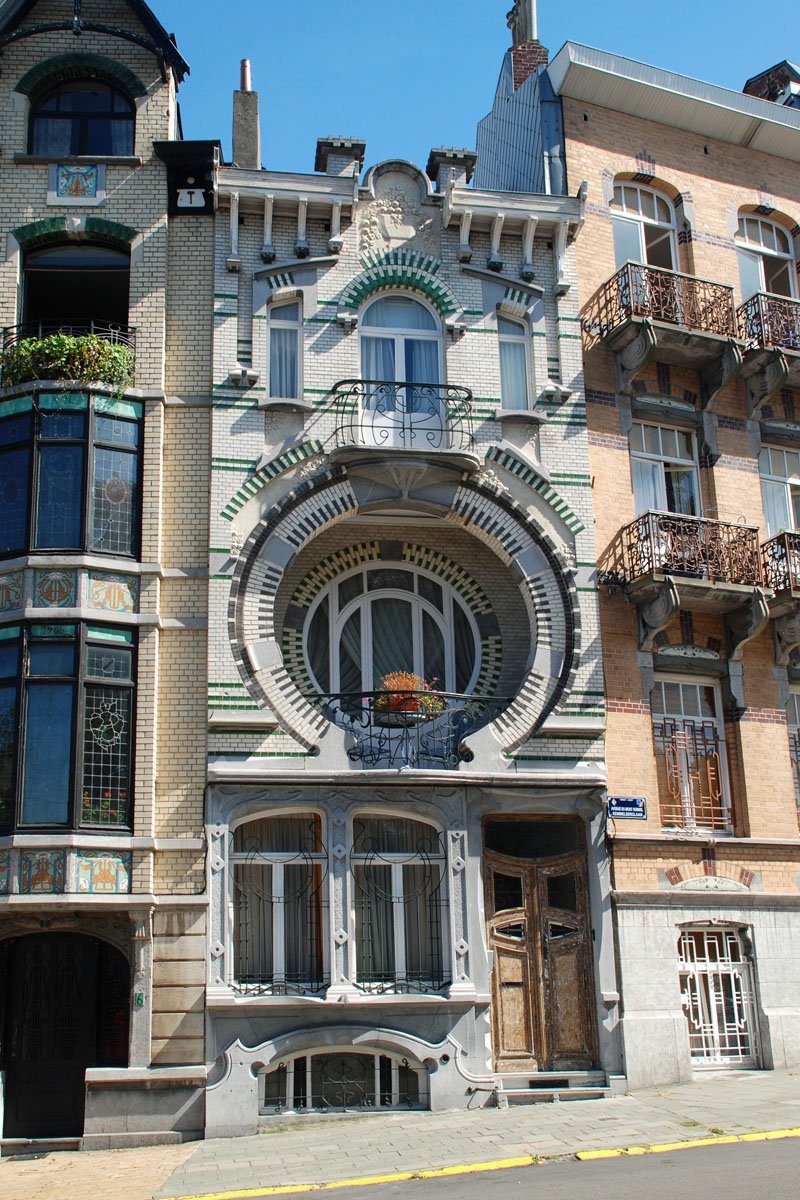#7199. Elegant Art Nouveau: Townhouse Façade with Round Porthole Window and Decorative Brickwork

Before us stands a striking example of Art Nouveau architecture that stands out among neighboring buildings with its expressive white façade featuring characteristic decorative elements. The central compositional accent is a large round porthole window on the second floor, framed by decorative brickwork with a contrasting solution. This technique creates a visual focus and gives the building a unique character.
The façade demonstrates a masterful combination of functionality and decorative appeal, typical of the early 20th century Art Nouveau style. The architectural solution includes an asymmetrical composition, flowing lines characteristic of the style, and exquisite detailing. Green accents against the white background of brickwork add special elegance to the building, while the wrought iron elements of the balconies emphasize the handcrafted work of the artisans of that time.
The tiered organization of the façade demonstrates a fine sense of proportion: the first floor with its entrance group and semi-circular windows, the dynamic second floor with the round window as the dominant feature, and a more restrained upper level with rectangular window openings. When designing a modern façade, one could borrow this principle of vertical zoning and experimentation with geometric window shapes to create a visually interesting composition.
The skillful brickwork with decorative inserts and ornaments deserves special attention, as does the sculptural element above the central part, adding individuality to the building. The combination of different textures and materials—brick, glass, metal—creates a rich palette of surfaces that can serve as a source of inspiration for architects and designers even today.